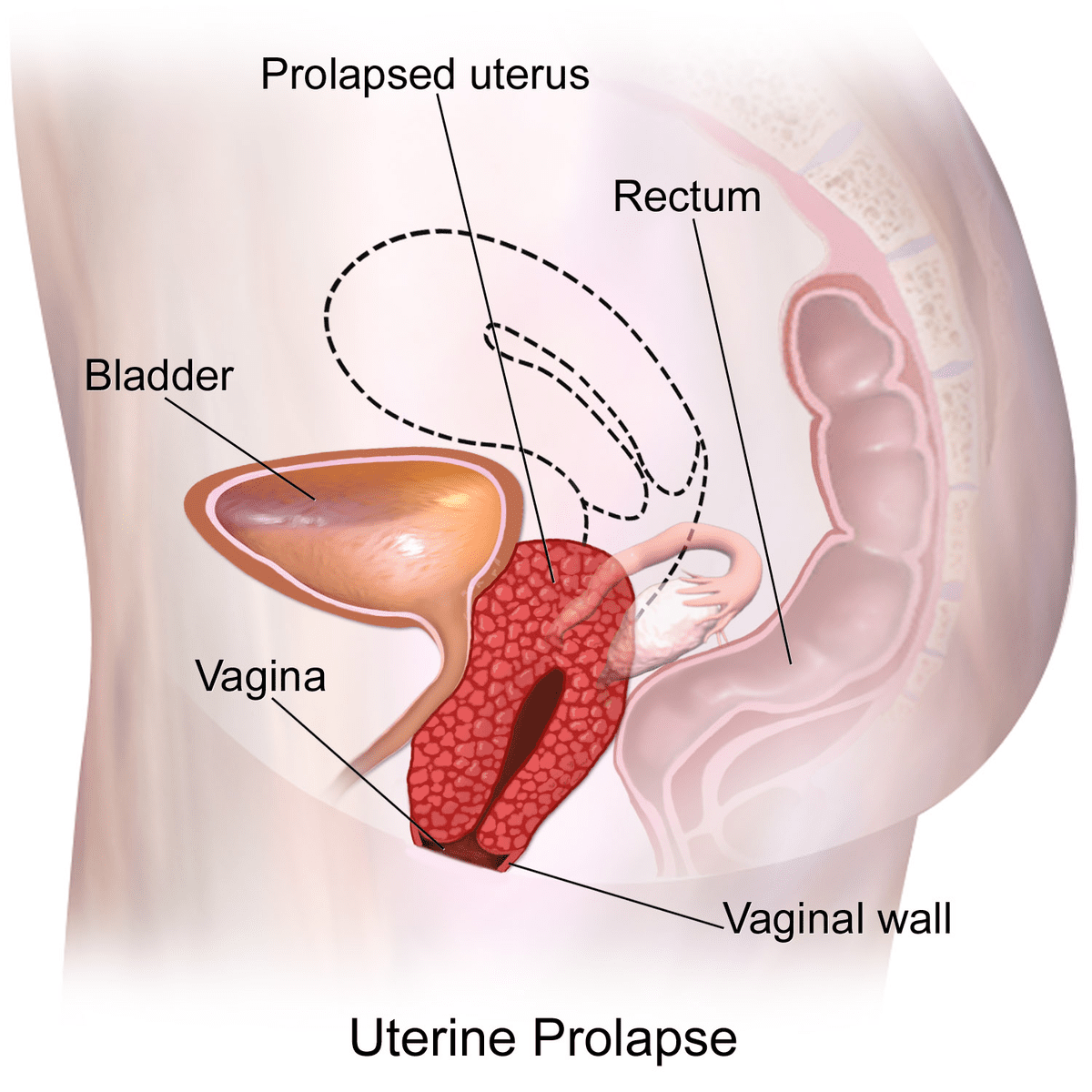Learn the different types + symptoms to look out for.

Pelvic organ prolapse (POP) is a condition that occurs when the connective tissues and muscles that support the pelvic organs weaken and stretch, causing the organs to drop down into the vaginal canal. This is a common condition that affects many women, particularly those who have had multiple vaginal births or who have experienced menopause.
The pelvic floor is a complex system of muscles, ligaments, and connective tissue that provides support for the bladder, uterus, rectum, and other pelvic organs. When the connective tissue weakens or stretches, it can cause the pelvic organs to shift out of place, leading to the symptoms of POP.
There are several different types of POP, including:
Uterine prolapse: This occurs when the uterus drops down into the vaginal canal. This type of prolapse is most common in women who have had multiple vaginal births.
Cystocele: This occurs when the bladder drops down into the vaginal canal. This can cause a feeling of pressure or fullness in the vagina, as well as difficulty urinating.
Rectocele: This occurs when the rectum protrudes into the vaginal wall. Symptoms of rectocele can include difficulty having a bowel movement and a feeling of pressure or discomfort in the rectal area.
Enterocele: This occurs when the small intestine drops into the vaginal canal. Symptoms of enterocele can include a feeling of pressure or fullness in the vagina, as well as discomfort during sexual intercourse.
Vaginal vault prolapse: This occurs when the top of the vagina drops down into the vaginal canal. This type of prolapse can cause discomfort or pain during sexual intercourse.
Symptoms of POP can vary depending on the type and severity of the prolapse. Common symptoms include:
A feeling of pressure or heaviness in the pelvis
Back pain
Difficulty urinating or having a bowel movement
Pain or discomfort during sexual intercourse
A feeling of a bulge or lump in the vagina
Incontinence or leakage of urine or feces
Treatment options for POP often focus on strengthening the pelvic floor muscles and improving the health and integrity of the connective tissue. Pelvic floor exercises, also known as Kegels, can help strengthen the muscles that support the pelvic organs. Other treatments may include lifestyle changes, such as losing weight or quitting smoking, or the use of a vaginal pessary, which is a device that helps support the pelvic organs.
In more severe cases, surgery may be necessary to repair the weakened connective tissue and support the pelvic organs. Surgery can involve repairing or removing damaged tissue, or using a mesh to support the organs and provide additional strength to the connective tissue.
If you are experiencing symptoms of POP, it is important to talk to your Pelvic Physiotherapist. They can perform an exam to determine the type and severity of the prolapse and help you develop a treatment plan that is right for you. With the right treatment, many women are able to find relief from the symptoms of POP and improve their quality of life.

